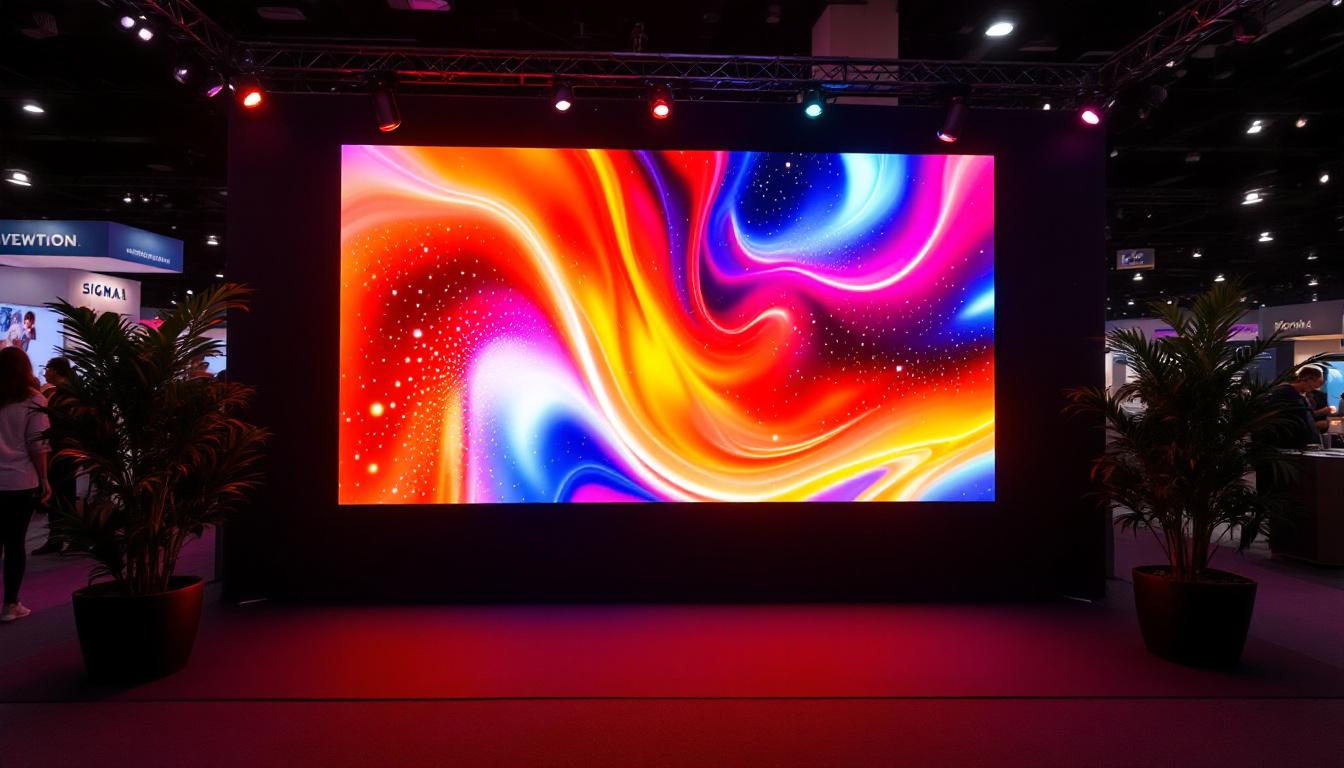The Metro Nashville Emergency Communications Center (ECC) plays a crucial role in ensuring public safety and effective emergency response in Nashville, Tennessee. As technology advances, the ECC has adopted various tools to enhance its operational efficiency, one of which is the LED display system. This article delves into the intricacies of the LED display utilized by the ECC, exploring its functions, benefits, and the technology behind it.
Understanding the Role of the Emergency Communications Center
The Emergency Communications Center serves as the nerve center for emergency response in Metro Nashville. It is responsible for receiving and processing emergency calls, dispatching police, fire, and medical services, and coordinating responses to incidents. The ECC operates 24/7, ensuring that help is always just a call away.
Key Functions of the ECC
At its core, the ECC is designed to handle a high volume of calls, often during critical situations. Operators are trained to assess the urgency of each call, gather pertinent information, and dispatch the appropriate resources. This requires a seamless integration of technology, communication skills, and situational awareness.
Moreover, the ECC is also involved in public education and outreach, providing information on safety protocols and emergency preparedness. This proactive approach helps to foster community resilience and ensures that citizens are well-informed about how to respond in emergencies. Regular workshops and community events are organized where residents can learn about first aid, fire safety, and disaster preparedness, empowering them to act effectively in a crisis.
The Importance of Technology in Emergency Response
In an age where technology is rapidly evolving, the ECC must leverage the latest advancements to enhance its service delivery. From sophisticated call-handling systems to advanced mapping software, technology plays a pivotal role in improving response times and operational efficiency.
One of the standout technologies adopted by the ECC is the LED display system. This innovative solution streamlines communication and enhances situational awareness for operators and first responders alike. In addition to this, the ECC utilizes Geographic Information Systems (GIS) to provide real-time data on incidents, allowing dispatchers to visualize the location of emergencies and the nearest available resources. This not only aids in quicker decision-making but also helps in optimizing the deployment of emergency services, ensuring that help arrives as swiftly as possible.
What is the LED Display System?
The LED display system is a state-of-the-art visual communication tool used within the ECC. It serves multiple purposes, including displaying real-time information, alerts, and critical data that aid in decision-making during emergencies.
Components of the LED Display System
The LED display system consists of several components that work in harmony to provide a comprehensive visual interface. These components include high-resolution screens, data feeds, and integrated software that allows for real-time updates.
High-resolution screens are strategically placed throughout the ECC to ensure visibility from various angles. This is crucial during high-stress situations where every second counts, and operators need to access information quickly.
Functionality and Features
One of the primary functionalities of the LED display system is its ability to showcase real-time data. This includes live updates on ongoing incidents, resource availability, and even weather alerts. Such information is vital for operators to make informed decisions and allocate resources effectively.
Additionally, the system can display important announcements and training reminders, ensuring that all personnel are kept in the loop regarding operational protocols and updates. This feature fosters a culture of continuous learning and preparedness within the ECC.
Benefits of the LED Display System
The implementation of the LED display system brings a multitude of benefits to the Metro Nashville Emergency Communications Center. These advantages not only enhance operational efficiency but also contribute to better outcomes during emergencies.
Improved Situational Awareness
One of the most significant benefits of the LED display system is the improved situational awareness it provides. Operators can quickly access critical information without having to sift through multiple screens or documents. This streamlined access to data allows for faster decision-making and response times.
Moreover, the real-time updates ensure that all personnel are on the same page, reducing the chances of miscommunication during high-pressure situations. This level of clarity is essential in emergency response, where every second can make a difference.
Enhanced Communication
The LED display system also enhances communication within the ECC. By providing a centralized platform for information sharing, it minimizes the risk of information overload and ensures that operators can focus on their tasks without distraction.
Furthermore, the ability to display alerts and announcements in real-time ensures that all team members are aware of any changes in protocol or new developments. This fosters a cohesive working environment, which is vital in emergency situations.
Increased Efficiency
Efficiency is paramount in emergency response, and the LED display system contributes significantly to this goal. By consolidating information into a single visual interface, operators can manage their tasks more effectively. This reduces the time spent on administrative duties and allows them to concentrate on what matters most—responding to emergencies.
Additionally, the system’s ability to integrate with other technologies, such as CAD (Computer-Aided Dispatch) systems, further enhances efficiency. This integration allows for seamless data sharing and ensures that operators have access to the most up-to-date information at all times.
The Technology Behind the LED Display System
The technology that powers the LED display system is a blend of hardware and software designed to deliver high-quality performance. Understanding this technology can provide insight into how the system operates and its potential for future enhancements.
Hardware Components
The hardware components of the LED display system include the LED panels themselves, which are designed for high brightness and clarity. These panels are built to withstand the rigors of a busy emergency communications environment, ensuring reliability and durability.
Additionally, the system includes a robust server infrastructure that supports data processing and storage. This infrastructure is crucial for handling the large volumes of data generated during emergencies and ensures that information is readily available when needed.
Software Integration
On the software side, the LED display system is equipped with advanced applications that facilitate real-time data management. These applications allow operators to customize the information displayed on the screens based on current needs and priorities.
Moreover, the software can integrate with other systems used within the ECC, such as incident management software and communication platforms. This interoperability ensures that all components of the emergency response ecosystem work together seamlessly, enhancing overall effectiveness.
Challenges and Considerations
While the LED display system offers numerous benefits, it is not without its challenges. Understanding these challenges is essential for optimizing the system’s performance and ensuring that it meets the needs of the ECC.
Maintenance and Upkeep
One of the primary challenges associated with the LED display system is maintenance. Like any technology, LED displays require regular upkeep to ensure optimal performance. This includes routine checks, software updates, and hardware repairs as needed.
Failure to maintain the system can lead to malfunctions, which could hinder communication during critical moments. Therefore, establishing a comprehensive maintenance plan is essential for the ECC to ensure the longevity and reliability of the LED display system.
Training and Familiarization
Another challenge lies in the need for ongoing training and familiarization with the system. As technology evolves, operators must stay updated on the latest features and functionalities. This requires a commitment to continuous learning and professional development.
To address this challenge, the ECC can implement regular training sessions and workshops to ensure that all personnel are proficient in using the LED display system. This proactive approach will help maximize the system’s potential and improve overall operational efficiency.
Future Developments and Innovations
The landscape of emergency communications is constantly evolving, and the LED display system is no exception. As technology advances, there are several potential developments and innovations that could further enhance the capabilities of the ECC.
Integration with Artificial Intelligence
One exciting possibility for the future of the LED display system is the integration of artificial intelligence (AI). AI could be utilized to analyze data in real-time, providing operators with predictive insights that can inform decision-making.
For instance, AI could help identify patterns in emergency calls, allowing the ECC to anticipate resource needs and allocate personnel more effectively. This proactive approach could lead to improved response times and better outcomes for the community.
Enhanced User Interfaces
As user experience becomes increasingly important in technology, future iterations of the LED display system may focus on enhancing user interfaces. This could involve developing more intuitive designs that allow operators to access information with greater ease.
By prioritizing user experience, the ECC can ensure that operators can navigate the system efficiently, reducing the cognitive load during high-stress situations. This focus on usability will be crucial in maximizing the effectiveness of the LED display system.
Conclusion
The Metro Nashville Emergency Communications Center’s LED display system is a vital tool in enhancing emergency response capabilities. By improving situational awareness, communication, and efficiency, the system plays a crucial role in ensuring public safety.
As technology continues to evolve, the ECC must remain adaptable and open to innovations that can further enhance its operations. By investing in maintenance, training, and future developments, the ECC can ensure that it remains at the forefront of emergency communications, ultimately benefiting the Nashville community it serves.
In conclusion, the LED display system is more than just a technological upgrade; it represents a commitment to excellence in emergency response. As the ECC continues to embrace advancements in technology, the safety and well-being of Nashville’s residents will remain a top priority.
Discover Cutting-Edge LED Display Solutions
As the Metro Nashville Emergency Communications Center leverages advanced LED display systems to enhance public safety, your organization can also benefit from the latest in visual communication technology. LumenMatrix, a leader in LED display innovation, offers a wide range of solutions including Indoor and Outdoor LED Wall Displays, Vehicle LED Displays, and more, designed to captivate and engage. Whether for emergency operations, brand visibility, or dynamic advertising, LumenMatrix’s mission is to empower businesses and services with impactful and clear messaging. Check out LumenMatrix LED Display Solutions to see how they can revolutionize your visual communication needs.































